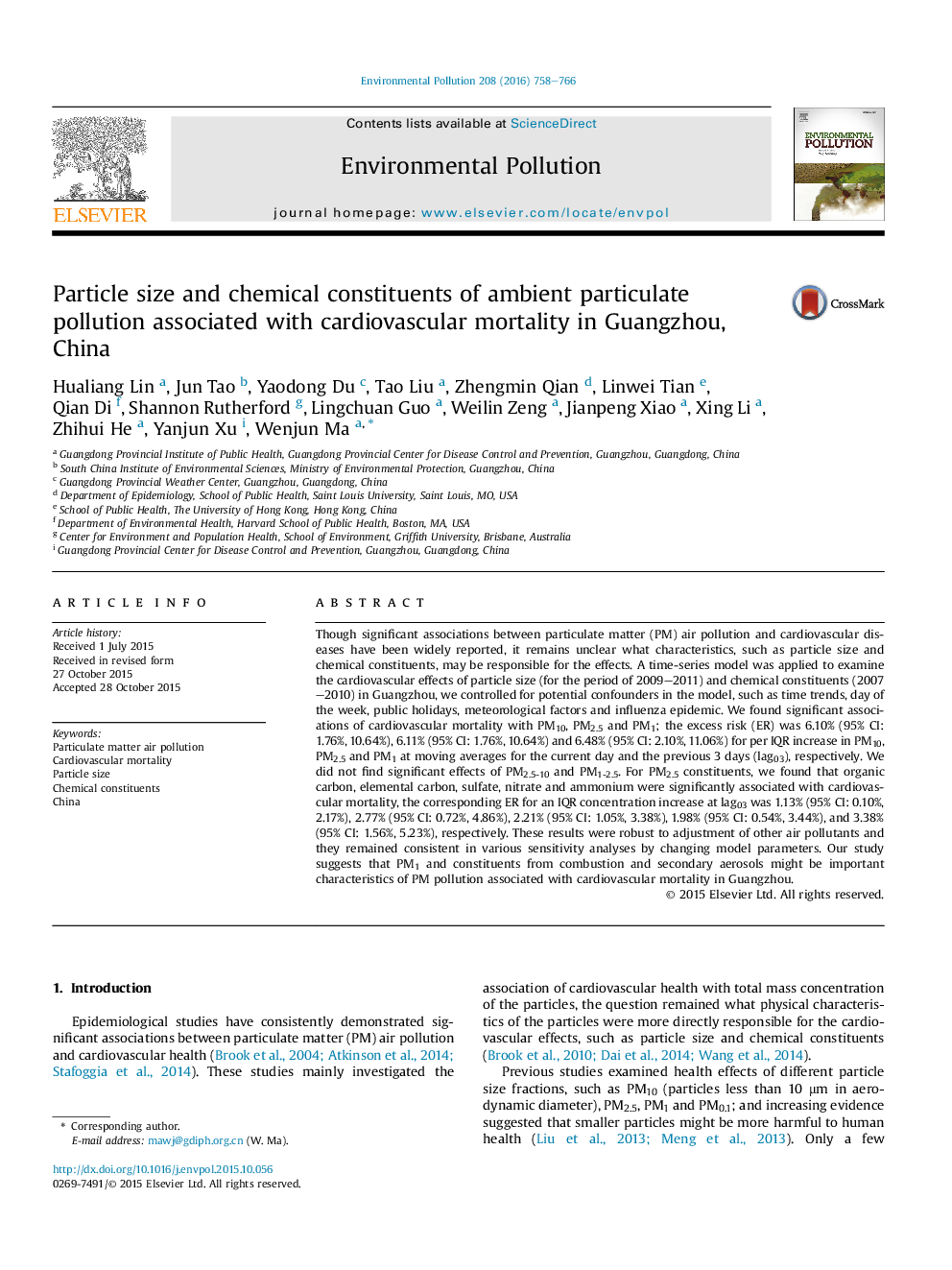| کد مقاله | کد نشریه | سال انتشار | مقاله انگلیسی | نسخه تمام متن |
|---|---|---|---|---|
| 6316341 | 1309044 | 2016 | 9 صفحه PDF | دانلود رایگان |
- PM10, PM2.5 and PM1 were significantly associated with cardiovascular mortality.
- We did not find significant cardiovascular effects of PM2.5-10 and PM1-2.5.
- PM1 might be most responsible for cardiovascular effects of PM pollution.
- Constituents from combustion and secondary aerosols might be harmful PM components.
Though significant associations between particulate matter (PM) air pollution and cardiovascular diseases have been widely reported, it remains unclear what characteristics, such as particle size and chemical constituents, may be responsible for the effects. A time-series model was applied to examine the cardiovascular effects of particle size (for the period of 2009-2011) and chemical constituents (2007-2010) in Guangzhou, we controlled for potential confounders in the model, such as time trends, day of the week, public holidays, meteorological factors and influenza epidemic. We found significant associations of cardiovascular mortality with PM10, PM2.5 and PM1; the excess risk (ER) was 6.10% (95% CI: 1.76%, 10.64%), 6.11% (95% CI: 1.76%, 10.64%) and 6.48% (95% CI: 2.10%, 11.06%) for per IQR increase in PM10, PM2.5 and PM1 at moving averages for the current day and the previous 3 days (lag03), respectively. We did not find significant effects of PM2.5-10 and PM1-2.5. For PM2.5 constituents, we found that organic carbon, elemental carbon, sulfate, nitrate and ammonium were significantly associated with cardiovascular mortality, the corresponding ER for an IQR concentration increase at lag03 was 1.13% (95% CI: 0.10%, 2.17%), 2.77% (95% CI: 0.72%, 4.86%), 2.21% (95% CI: 1.05%, 3.38%), 1.98% (95% CI: 0.54%, 3.44%), and 3.38% (95% CI: 1.56%, 5.23%), respectively. These results were robust to adjustment of other air pollutants and they remained consistent in various sensitivity analyses by changing model parameters. Our study suggests that PM1 and constituents from combustion and secondary aerosols might be important characteristics of PM pollution associated with cardiovascular mortality in Guangzhou.
Journal: Environmental Pollution - Volume 208, Part B, January 2016, Pages 758-766
